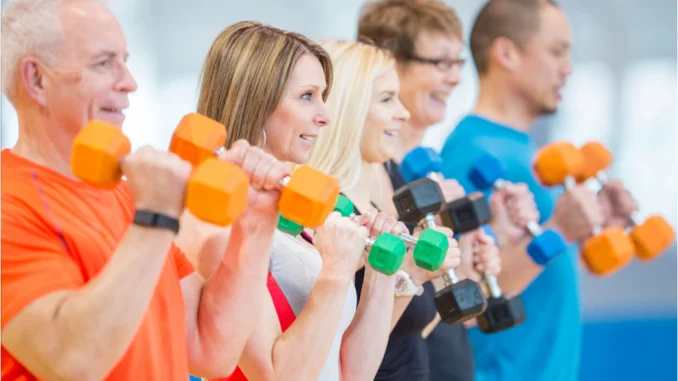
physical activity Having a population with a high number of elderly people can be considered both a social triumph and a burden on the national health system. A greater number of neuro-degenerative diseases linked to aging leads to an increase in expenses and care costs. To combat this phenomenon, it is important to promote a new concept of aging,
based on preserving the psycho-physical conditions of elderly people. More precisely, the objective to be pursued is the promotion and incentive towards the diffusion of fitness for the elderly.
Fitness for seniors: why is it important?
Any form of physical activity carried out by elderly people allows them to achieve the goal of healthy , but above all active, aging. This is because constant movement prevents muscle atrophy and stiffening of the joints, as well as possible degeneration of the neural system, increasing the chances of maintaining a high level of quality of life.
Furthermore, fitness for the elderly also brings benefits to the cardiovascular system, controlling arterial hypertension and the amount of lipid reserves present in our body (for example our cholesterol level) and helps in the fight against the weakening of bones, limiting the damage of diseases such as osteoporosis and that of a possible fall.
Leaving aside the advantages that fitness for the elderly brings to their body, we absolutely must not underestimate the positive effects generated on the psyche. Being independent and healthy during this phase of life also leads to a better and positive state of mind, thus banishing problems such as depression.
The benefits of fitness for hypertension
As previously mentioned, physical activity decreases the chances of developing cardiovascular diseases.
It has long been demonstrated that the greater the amount of physical activity performed during one’s life, the less likely it is that hypertension problems will arise. In fact, it can be said that the level of training is inversely proportional to blood pressure levels. Regular exercise, such as swimming, walking, yoga and Pilates, reduces our resting blood pressure levels.

In this regard, it is important that the exercise has an intensity between light and moderate , so that it causes fatigue without risking affecting the health of an elderly person. To be more precise, it is advisable to carry out a daily activity lasting at least 30 minutes, up to a full hour.
Metabolic syndrome and physical exercise
When we talk about metabolic syndrome we mean a complex physical condition, often caused by an unhealthy and regular lifestyle. This term can be used when at least three different diseases or metabolic factors outside the normal range are present.
Below we list the factors to consider:
- Fasting blood sugar above 100mg/dl or declared diabetes
- Abdominal circumference greater than or equal to 94cm for males and 80cm for females
- Triglyceridemic greater than or equal to 150mg/dl
- Blood pressure greater than or equal to 130/85 mmHg
- “Good” cholesterol (HDL) levels less than 40mg/dl for males and 50mg/dl for females
In order to face and overcome metabolic syndrome, our two main allies are correct nutrition and physical exercise. By correctly applying both, it is possible to act positively on all the individual factors listed above, improving physical conditions over time and greatly reducing health risks.
How to train safely
Although physical activity is our ally, it is important to know what type of exercises to perform and how to practice them correctly, so as to avoid causing injuries. For this reason, the best choice is to rely on specialists trained in the field of fitness for elderly people .
If you still want to train alone, it is important to take the right safety measures.
Here is a small list of precautions to take into account when carrying out any physical activity.
BREATHING
Breathing is one of the most important phases of physical effort. The respiratory system is closely connected to the cardiovascular system, since to allow the sufficient supply of nutrients to our body, necessary for the execution of motor activity, the heart rate and respiratory rate increase.
When performing an exercise, it is advisable to exhale during the active phase and inhale during the negative one. Furthermore, it is important to always breathe through your nose for two reasons:
- The nasal cilia act as a filter, blocking harmful external agents that would enter during inhalation
- The nasal cavities heat the incoming air
CARDIOVASCULAR PROBLEMS
Read more: (These plant-based foods contain a lot of calcium)